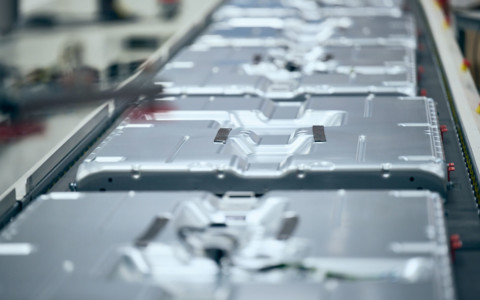Plastic has a reputation for being one of the big issues when it comes to trash and single-use products littering streets, filling landfills and polluting oceans. However, more companies have adopted recycled plastic as a material in their products, including clothing and various everyday items.
Unfortunately, not all plastics can be recycled and even when recycling is possible, much of the plastic used around the world ends up in landfills or pollutes vulnerable areas in nature. So is plastic a threat or can we solve the issue of plastic with recycling?
Is recycling plastic always possible?
Whether plastic can be recycled depends on the type of plastic and how it has been used. Even if some plastic used in many products, such as single-use coffee cups, could be recycled, it is inefficient to do so because the different materials need to be separated in the recycling process.
Yet, much of plastic is recycled across the world. For example, in Framery’s native country Finland, the recycling rate of plastic packaging is 27% and more than 90% for beverage packages with a deposit.
Plastic is a problem particularly with single-use packaging which is either unrecyclable or is thrown in the trash after its use. When single-use plastic cannot be put into new use and more plastic needs to be produced simultaneously, this requires the excavation and production of finite fossil materials, primarily oil.
Just recycling plastic is not the solution
It may also be tempting to think that we can continue using plastic like before if we only recycle it. Unfortunately, plastic products contain different types of plastics that cannot be separated in a manner that makes recycling viable.
A better alternative to mixed plastics is the use of so-called monomaterials that consist of only a single material, such as glass, paper, and plastic. Because monomaterials are made of the same material, recycling them is easier and makes recycling less energy-intensive.
One issue is the quality of plastic after it is used. If the same plastic material is used and reused repeatedly, its quality starts to degrade. Although they are not renewable, materials such as steel and aluminum can be recycled more or less indefinitely.
Another concern with recycling plastic is that, although it could be recycled, it may still end up in a landfill or be incinerated for energy. This is because in many cases there is either no appropriate recycling infrastructure in place, the amount of recycled plastic exceeds the need for recyclable material or recyclable plastic is simply thrown away.
How does plastic fit circular economy?
Although recycling plastic is a way to make its use more sustainable, recycling alone is not the solution to the problem caused by plastic. This is where circular economy comes into play.
The Ellen MacArthur Foundation provides six main points for combatting the harm done by single-use plastic and products made of plastic.
- Although plastic has its uses and makes for great material in many cases, using plastic could be avoided in many instances by rethinking how products are made, used, and circulated. And not all products that are made of plastic are needed in the first place. For instance, if plastic packaging is not needed in a particular product, it should be removed altogether.
- Rather than create single-use solutions using plastic or simply recycling it, we should focus on thinking about how the material can be reused instead. This means taking the same plastic-made product and using it for the same purpose again. This has benefits for businesses as well when new packaging is not needed.
- By rethinking the use of plastic throughout the entire system, all plastic packaging can be made entirely reusable, recyclable, or compostable. The changes needed to accomplish this are not limited to just the product and its materials, but the entire infrastructure where the products are produced and used.
- Even if we are able to get rid of single-use plastics in products and are able to reuse them, there should be a system in place to ensure these products do not end up in landfills or oceans after their use. This is where businesses are also responsible in ensuring that their products are reused or recycled in an appropriate manner after use. Regulation by governments plays also a great role in enabling this.
- As the production of plastic is dependent on the use of oil and non-renewable resources, this link between plastic and finite resources should be broken. As a solution, recycled materials and renewable resources should be used instead. In addition, the energy used in the process should be switched to a renewable alternative.
- Single-use plastic products contain more than just plastic, added into the product either intentionally or unintentionally. Therefore, many plastic products can be harmful to human health in addition to the environment. This is why all plastic products should be free of hazardous chemicals and safe to use, produce and recycle.
Use of plastic in Framery products
The industry standard for soundproof office pods is to use recycled PET (polyester) made from recycled plastic bottles as an absorbent material. Although this is a way to reuse plastic material, a more sustainable solution would be to reuse them as bottles. This kind of closed-loop recycling is part of the circular economy and does not require turning the material into something new in a process that both affects its quality and demands great amounts of energy.
The plastic used in Framery pods is used primarily in interior panels and as an absorbent material that helps us achieve optimal acoustics inside the pod. 80% of the acoustic foam in Framery pods is made using plastic derived from recycled plastic bottles. The PET used in the felts is safe and does not release harmful particles that can harm people inside the pods. One common material used in buildings is glass wool. However, when small particles of glass wool are released in the air, it can cause irritation and other adverse effects for the user. This is why no glass wool is used in Framery pods as an absorbent material. Instead, the pods’ absorbent material is in accordance with M1 Emission Classification and Greenguard Certifications, and is therefore safe for the user.
However, just using recycled plastic is not enough. At Framery, we are committed to circular economy approach in producing and reusing our pods. The Framery Subscribed model is our current solution to this. By reusing the pods, we can minimize the creation of new materials that require the use of non-renewable resources, such as plastic. The Framery Subscribed, our “pod as a service” circular business model, is available in selected markets.




